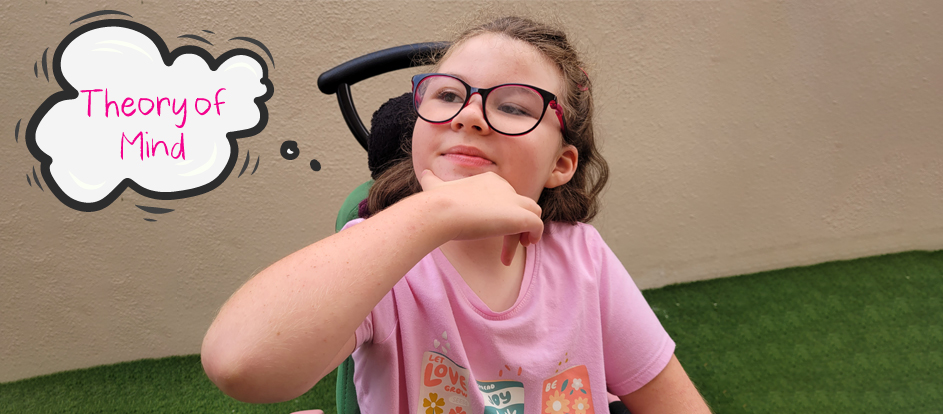

Theory of Mind (Tuning in to others)

Hanouf Hassan
Senior Speech & Language Therapist
DHA License Number: 00218144-007

Does your child ever cover their eyes and think they are invisible when playing games such as hide-and-seek? What about when you ask your child to pick out a gift for a parent or sibling; do they choose a toy that they’d like to receive themselves instead of something the other person would like? These actions can indicate that your child sees the world from their own perspective only.
The ability to understand that another person’s thoughts and feelings differ from our own is referred to as ‘Theory of Mind.’ It is called a theory because no person can ever know exactly what’s going on in someone else’s mind. Many common English expressions describe this basic ability as “tuning in” or “standing in someone else’s shoes.”
Theory of mind develops gradually, with intuitive social skills appearing in infancy and reflective social cognition developing during the toddler and preschool years. During early childhood, children develop certain foundational skills that will help promote theory of mind. Some of these skills include watching others and imitating them, putting words to the feelings of others, and pretending to be another person in play, such as ‘playing a doctor or being mommy.’
True theory of mind starts to develop closer to age 4-5, when children really start to understand other people’s thoughts and emotions. Theory of mind continues to develop after the age of 5, during which children begin to understand that other people think differently from them and may act differently to get what they want. This is where children start to learn more abstract language such as figures of speech, idioms, and sarcasm.
When children struggle to develop their theory of mind, it can hinder their ability to:
- Comprehend the reasons behind people’s actions and words,
- Participate in conversations,
- Narrate a story,
- Grasp the perspectives of characters in stories,
- Form friendships,
- Engage in imaginative play.
Specific groups of children may face obstacles in theory of mind development, including:
- Those with autism spectrum disorder,
- Those with social communication challenges,
- Those with attention-deficit/hyperactivity disorder,
- Deaf children who use sign language and have hearing parents who do not sign (these children are not exposed to sign language until later in life, impacting their theory of mind growth).
Helping young children to develop their theory of mind is crucial for their understanding of the thoughts and feelings of others. Research indicates that when parents use language that references thinking and feeling when communicating with their child, it aids their theory of mind development.
To support this development at home, parents can engage in activities such as:
- Pretend play
- Taking on different characters and roles.
- Using books to talk about characters’ thoughts and feelings.
- Talking about past experiences – Talk with your child about what happened earlier in the day, week, month, or year, while incorporating mental state verbs. For example: “We wanted to do something special for Emily’s birthday. We knew she liked going to the park. We remembered the last time we went to the park together; Emily told us that she felt so happy swinging on the swings. She told us that she thinks the swings are the best part of going to the park.”
- Naming mental states as they occur – Help your child notice other people’s mental states by drawing specific attention to them. For example, when ordering food at a restaurant, you could ask, “What do you think your brother might like to eat? Why don’t you ask Nathan what he would like to eat?”. When you do this, it highlights that you and your child don’t always know what Nathan would like, but you can find out by asking him.
In summary, to increase your child’s theory of mind skills, put into words what you are both thinking and feeling. These interactions will enhance your child’s understanding of their own thoughts and feelings and how others can have different thoughts and feelings from their own.
Sources:
- TalkAbility
- Hanen program for verbal children on the Autism spectrum


